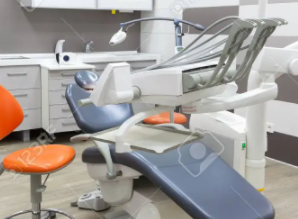Implant Materials: Resistance to Corrosion
In a previous article, we examined biocompatibility, resistance to corrosion, and fracturing, and durability of implant materials. In this article, we’ll take a closer look at these factors, and examine the most common materials used in modern surgeries. Let’s look at some of the more common materials for use in modern surgery, and why they may not be the best choice. For the best implant materials, here are some key points to consider:
Biocompatibility
The biocompatibility of implant materials refers to the ability of the material to function in biological systems, and is the basis for improving the performance of surgical devices. This article reviews the history of biocompatible materials and the central ideas related to them, such as mechanical effects, toxicity, issues associated with colonizing organisms, and in vivo assessment. Examples of biocompatible implants demonstrate their ability to integrate into the host and heal well. The Three Rs concept is used to define biocompatibility.
The cellular behavior of biocompatible implants is influenced by the biomaterial’s surface. Using a confocal microscope, scientists observed MC3T3-E1 cells attached to scaffolds fabricated from nano-hydroxyapatite, polyamide 66, and glass fiber. Cell attachment was then observed by confocal micrograph. In all cases, the biocompatible coating promoted cellular behavior.
Resistance to corrosion for implant materials
The resistance to corrosion of implant materials is a critical factor in the selection of biomedical devices. During implantation, the metals used are initially corroding, but they form a protective barrier film that prevents deeper metal atoms from degrading. This barrier film can be disrupted by mechanical forces or by the implantation site itself. 강남역치과 The resistance to corrosion of implant materials depends on the material used for the device and how long it will be placed.
One way to assess the corrosion resistance of implant materials is to conduct an immersion test, which takes years to complete. Another method, accelerated electrochemical testing (AET), involves inducing changes in a material’s surface and then monitoring the effects. A newer method, the accelerated electrochemical testing (AET), began in the late 1960s and the 1980s. The original test standard was the stepped potentiostatic and potentiodynamic tests, which were both very useful in evaluating corrosion resistance. Another method was a cyclic experiment. This type of experiment evaluated the susceptibility of a metallic implant to localized pitting.
Resistance to fracturing

One important question that remains unanswered in the field of dental implants is whether there is a relationship between fracture resistance and implant design. This article investigates whether implants have different fracture resistance and aims to answer that question. The research team used a computer-aided design system (CAD) to create thirty cylinders of zirconia that were sintered and then milled. The results indicate that the optimum thickness for zirconia-supported implants depends on the type of implant and the degree of implant design.
Although titanium-based implants are biocompatible and have good mechanical properties, they suffer from esthetic issues in the anterior region. To overcome this esthetic problem, ceramic abutments were developed. The study also compared the fracture resistance of individual implant components. The Ancer group implants exhibited the highest fracture resistance, while JJ Orthodontics and SK Surgicals had the lowest fracture resistance values.
Durability
The study of the long-term durability of implant materials is an important topic in the field of medicine, particularly in craniofacial and musculoskeletal implants. Improving the long-term durability of implant materials is especially important due to the aging population, which makes the study of the body-implant interface of prosthetic metals even more relevant. Currently, one of the main impediments to the long-term durability of implant materials is the inflammatory response to metal debris produced by the prosthetic metal. In this paper, we will review the corrosion behavior of a new class of boron-containing titanium alloys in physiologically relevant media. We will also discuss the suitability of these alloys from a mechanical perspective and its implications for implant design.
The metallic implant materials are widely used in the field of medicine because they exhibit good mechanical properties. The corrosion resistance and wear resistance of metallic materials are critical to their long-term durability. The corrosion resistance and wear resistance of the metal implants are determined by the manufacturing method and heat treatment process. In addition, the adverse cellular response to wear debris continues to pose significant challenges for the design of medical implants. Additionally, the leaching of metallic ions from implant materials has been a major cause of concern. Nickel alloys have shown better biocompatibility than Co-Cr-Mo and other metals.